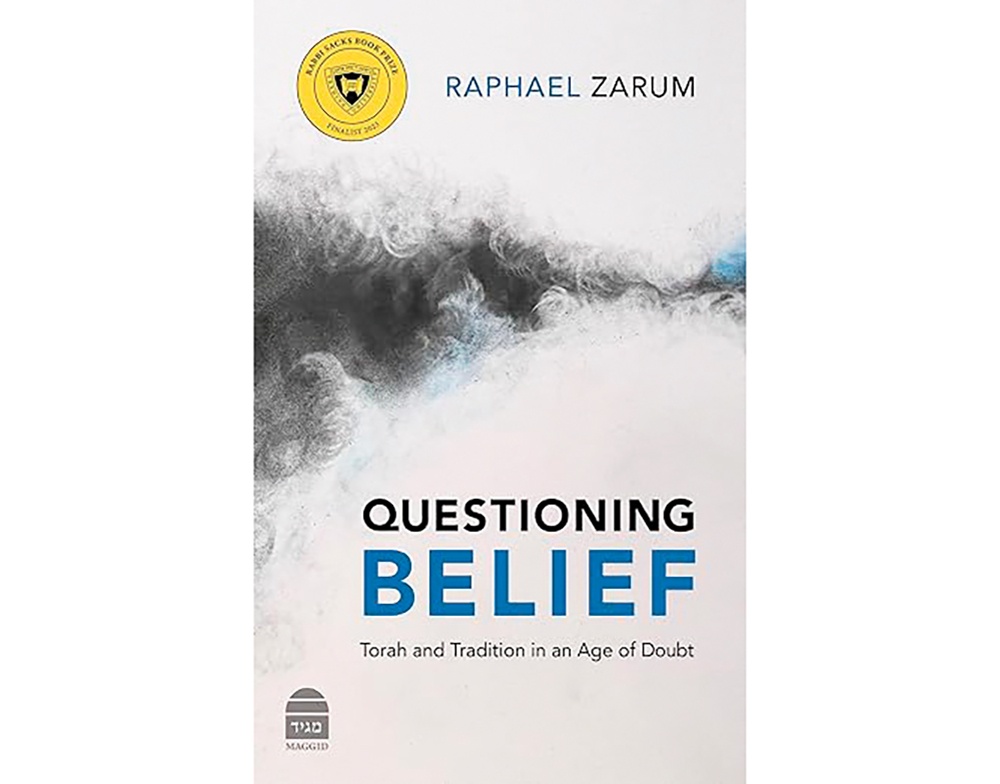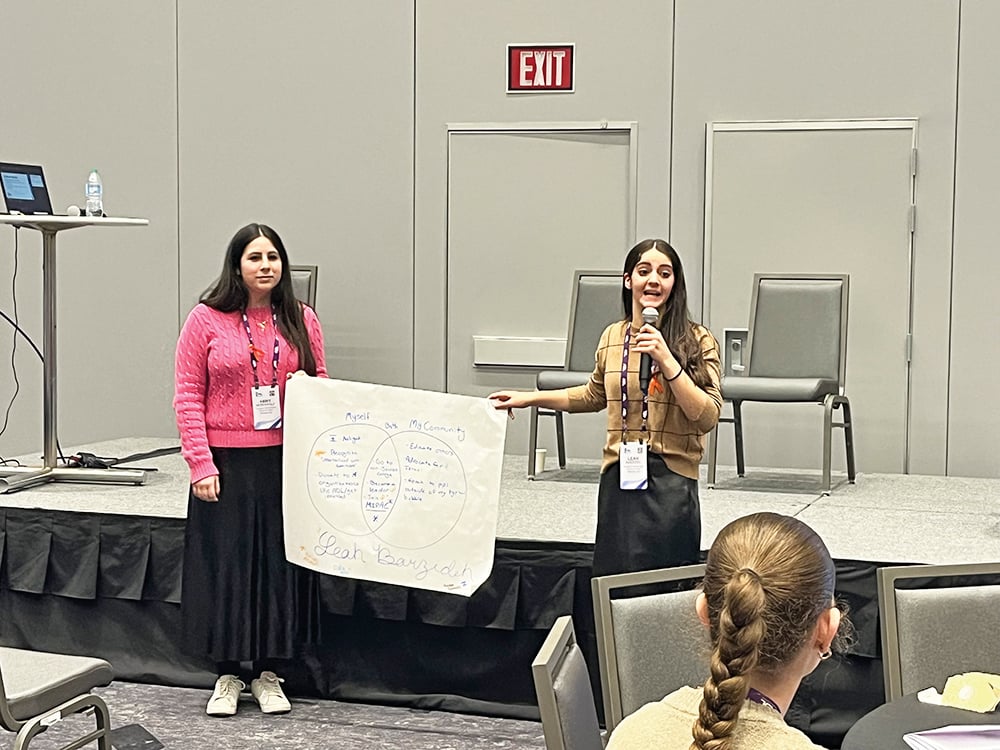
Reviewing: “Questioning Belief: Torah and Tradition in an Age of Doubt” by Raphael Zarum. Maggid Books. 2024. English. Hardcover. 360 pages. ISBN-13: 978-1592646197.
In her groundbreaking book “Off the Derech: Why Observant Jews Stop Practicing Judaism; How to Respond to the Challenge,” Faranak Margolese observed that one of the primary reasons young people leave religious observance is that many of their serious questions about faith and belief remain unanswered.
And for many, it’s not just that their teachers left them unanswered; they were mocked and shamed for asking them. For many students, asking challenging questions related to Talmud study is rewarded with praise. However, asking legitimate and challenging questions about tradition and faith often results in shame and calling the student a heretic for even considering such a question.
For every student (or adult) who has been called a non-believer for raising legitimate questions, for anyone who has struggled with reconciling events in Jewish history that seemingly contradict science, “Questioning Belief: Torah and Tradition in an Age of Doubt” by Rabbi Dr. Raphael Zarum is the book for them.
Part of the problem in answering questions about belief is that the questioner, even when they get a response, can get a juvenile response or a non-answer. HaRav Aharon Lichtenstein articulately wrote that “in the final analysis, the primary human source of faith is faith itself.” Yet for those struggling with questions of faith, that might not be enough to assuage them.
What Zarum does here particularly well is to first acknowledge that these questions are legitimate. He then directly answers them, and he does that in an intellectually honest and sophisticated manner, always with a deep sense of empathy for the reader’s struggle.
The book is organized into three parts, Origins, detailing topics such as Torah vs. science, issues around reconciling Torah narratives with history, Ethics, and how to deal with such issues as slavery, animal sacrifice and more. And Beliefs, dealing with what believing in God is, arguing with God, and more.
In each chapter, Zarum validates the questions, validating their legitimacy, and then works to respond to them with modern science and philosophy research, including Torah sources, to reconcile most of the problems.
Not everyone, particularly those with a more fundamentalist approach, will be happy with every explanation. For example, the flood narrative in Genesis chapters six through nine presents significant issues in reconciling it with archeology, paleontology and geology. According to traditional biblical chronology, the flood occurred around 4,500 years ago, making many scientific problems more difficult.
Zarum’s approach regarding the flood is to note that the drama and hyperbole in the story are not meant to be understood entirely literally. He also writes that the story could be read as a regional event that occurred in a limited area in Mesopotamia. The overflowing of the Tigris and Euphrates rivers is a regular occurrence that occasionally has devastating consequences for local populations.
Once the Flood story is not treated as a global occurrence, many problematic scientific issues it raises disappear. No extra water is needed, the global ecosystem remains intact, and more. A regional flood also overcomes the need to save every land-based life form. Those rescued may have been picked up just those that people were familiar with domesticated animals such as pets, livestock, load-bearing animals, and some wilder ones.
Zarum’s approach to answering the flood story and everything else in the book combines modern science and traditional Torah commentaries. None of the issues he details are monolithic, and many philosophical problems arise when people believe there is only one approach to the story.
There are, in fact, two tragedies of leaving philosophical questions unanswered. The first is that, as Margolese noted, they frustrate the questioner and thwart their efforts to understand. But these questions are also superb mechanisms for delving into the veracity of the Torah and its stories. The questions are wonderful tools for launching more significant insights. That is why this book is so stimulating and intellectually refreshing. Zarum is no apologist and deals with all of the topics head-on.
Another thorny question is dealing with human slavery, which the Torah allows. Ironically, the 2022 Global Estimates of Modern Slavery from Walk Free, the International Labour Organization, and the International Organization for Migration report that nearly 50 million people live in modern slavery in forced labor. Of which roughly a quarter of all victims of modern slavery are children.
Slavery was a social norm in the ancient world. Rather than simply condoning it, the Torah presents laws that restrict the abuses that it causes. Also, by constantly reiterating the powerful theme of remembering the Exodus, it gradually conditions its adherents to see slavery itself as abhorrent and to challenge its very existence.
Zarum also quotes the late great Rabbi Nahum Rabinovitch, who wrote that the abolition of slavery was, in fact, a partial realization of the ideals taught by the Torah. It is clear to anyone who has studied a bit of the history of the West that the spread of Torah values was a decisive factor in this historical process.
David Goldman writes that Rabbi Joseph B. Soloveitchik came from the first generation of Lithuanian rabbis who confronted the Haskalah on its own terms, studying at the University of Warsaw before his six years of graduate education at the Friedrich Wilhelm University in Berlin. He was proud that the intellectual rigor and systemic construction of Brisker Torah required no apologies to Western philosophy.
Zarum follows the Rav in confronting these issues on its own terms. “Questioning Belief: Torah and Tradition in an Age of Doubt” has countless fascinating and thought-provoking questions. Contrary to what many may think about questioning the fundamentals of our faith, these questions will only strengthen you spiritually.
Ben Rothke lives in New Jersey and works in the information security field. He reviews books on religion, technology, philosophy and science. Follow him on Twitter at @benrothke. His new book was recently published: The Definitive Guide to PCI DSS Version 4: Documentation, Compliance, and Management.
Editor’s note: This article is reprinted it its entirety since there was an error in the headline and book image last week. We regret the error.












